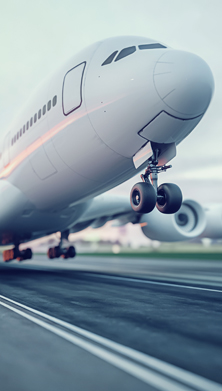- The aviation industry supports 63 million jobs globally and underpins $2.7trn in economic activity [1] so safety in the sector is of critical importance. Aviation incidents and accidents will always captivate both media and public attention, as a number of recent crashes resulting in fatalities only too well demonstrate.
- Yet as highlighted in AGCS's and Embry-Riddle Aeronautical University’s previous Global Aviation Safety Study there has been an ongoing decline in the number of fatal accidents over the past 60 years despite a significant growth in the number of passengers [2].
Between 1959 and 2017 there were 29,298 recorded onboard deaths from 500 global commercial jet fleet fatal accident events [3]. However, through the 10-year period from 2008 to 2017 there were only 2,199 fatalities from 37 fatal accident events, or less than 8% of the total number. Most fatalities occurred within the first 20 years after the introduction of a public jet service.
According to the International Air Transport Association (IATA) [4], there was just one major accident for every 8.7 million flights in 2017 – over four billion travelers flew safely on 41.8 million flights. For the first time in at least 60 years of aviation there were no fatalities on a passenger jet; a remarkable achievement by any measure. With more than one million people in the air at any one time, this impressive statistic is to be applauded but 2018 and 2019 to date have brought a number of fatal airline accidents, the worst being the loss of a Lion Air Boeing 737 off Indonesia in October 2018, which went down shortly after take-off with the loss of 189 people. On March 10, 2019, an Ethiopian Airlines 737 crashed after take-off with the loss of all 157 passengers. Overall, 2018 saw a total of 15 fatal airliner accidents with 556 fatalities among passengers and crew [5] but this still ensured it was the third safest year ever by the number of fatal accidents and the ninth safest in terms of fatalities according to the Aviation Safety Network [6]. In the European Union there has not been a fatal commercial accident since 2015. Meanwhile, in the US one passenger died in a commercial accident during 2018, the first death on a US airline flight in nine years.

ABOUT THE INFOGRAPHIC: Accident rates and onboard fatalities by year - Since the 1950s the safety record of the aviation industry has seen significant improvement, based on accident rates. The accident rate is a measurement used to determine flight operations safety, which is measured by the number of accidents per million departures. During the 1950s and 1960s the accident rate was high, but within little over a decade it had declined significantly with recent accident rates at just over 0.01 per million for the US and Canada and 0.035 for the rest of the world.
Source: Boeing Statistical Summary Of Commercial Jet Airplane Accidents Worldwide Operations 1959 -2017, October 2018
Improvement drivers
Such continuous improvement in safety can be attributed to a number of different factors and positive trends. Aircraft have become more reliable, while safety systems and culture have improved enormously. A number of design implementations have had a dramatic impact on aircraft accident rates, helping to significantly reduce risk, including aerodynamic and airframe improvements, fail-safe design criteria, improvements to cockpit instrumentation, as well as the increasing number of fly-by-wire controlled aircraft in operation.
The development of fly-by-wire aircraft has probably been the biggest safety advancement in recent decades, and is a key factor behind the large reduction in fatal air crashes in recent years, according to Sebastien Saillard, Regional Claims Head Mediterranean Region at AGCS, and Guillaume Cadillat, Regional Claims Practice Leader Aviation and Space at AGCS.
“Despite record numbers of passengers, statistics show that flying has never been safer. The number of aviation losses is drastically down,” says Saillard. “Fly-by-wire aircraft have resulted in a significant increase in airline safety and a reduction in large losses over the past 15 years. This is an ongoing trend, confirmed year-on-year by industry accident data.”

“We have now had decades of experience of fly- by-wire technology, and, while there may always be a few exceptions, overall it has worked extremely well, significantly improving airline safety,” adds Cadillat.
At the same time, engine manufacturers have almost eliminated the chance of an engine failure. Radio and avionics are extremely precise and systems integration provides extra information and backup. Improved air traffic control technology and better collision systems have also had a positive impact. For example, it is estimated that the risk of controlled flight into terrain in Western Europe and North America is now around 50 times less [7] than it was in the early 1990s due to the introduction of the Enhanced Ground Proximity Warning System (EGPWS), a terrain awareness warning system designed to alert pilots if their aircraft is in immediate danger of flying into the ground or another hazard.
Pilots now have much more live information at their fingertips, while current navigation systems have the capability to determine an aircraft’s position to the thousandths of a mile. Meanwhile, aircraft data collection devices can record thousands of parameters, increasing the understanding of operations and accidents.
Safety inspections are now far more effective. Aircraft inspections are much more detailed and stringent than in the past and have been quick to incorporate improved technologies. This means problems are increasingly identified and dealt with long before they become a significant issue. Another major factor has been the increased use of recurrent training, which refreshes the skills of pilots and crew, as well as helping them prepare for unusual or emergency situations. This has had a significant impact in reducing accidents and insurance claims.
Improvements in science have also allowed the aviation industry to better understand how human factors can affect safety. Pilot fatigue, training, crew resource management and other factors have become increasingly important issues. Meanwhile, there have also been significant improvements in manufacturing processes, aircraft operations, industry culture and government regulation.
- [1] The Air Transport Action Group, Benefits Beyond Borders
- [2] Allianz Global Corporate & Specialty and Embry-Riddle Aeronautical University, Global Aviation Safety Study
[3] Boeing Statistical Summary of Commercial Jet Airplane Accidents Worldwide Operations 1959-2017
[4] International Air Transport Association, IATA Releases 2017 Airline Safety Performance
[5] Aviation Safety Network, Aviation Safety Network Releases 2018 Airliner Accident Statistics
[6] Aviation Safety Network, Aviation Safety Network Releases 2018 Airliner Accident Statistics
[7] Honeywell Aero Technology Key Technologies
This article is part of the report "Aviation Risk Report 2020" which focuses on safety developments in commercial aviation around the world. It identifies a number of insurance claims trends which are impacting the industry – including the top causes of financial losses – and highlights a number of risk trends and challenges that will impact the aviation sector and insurance landscape in future.
The findings have been produced with the assistance of Embry-Riddle Aeronautical University, the world’s largest fully-accredited university specializing in aviation and aerospace.















